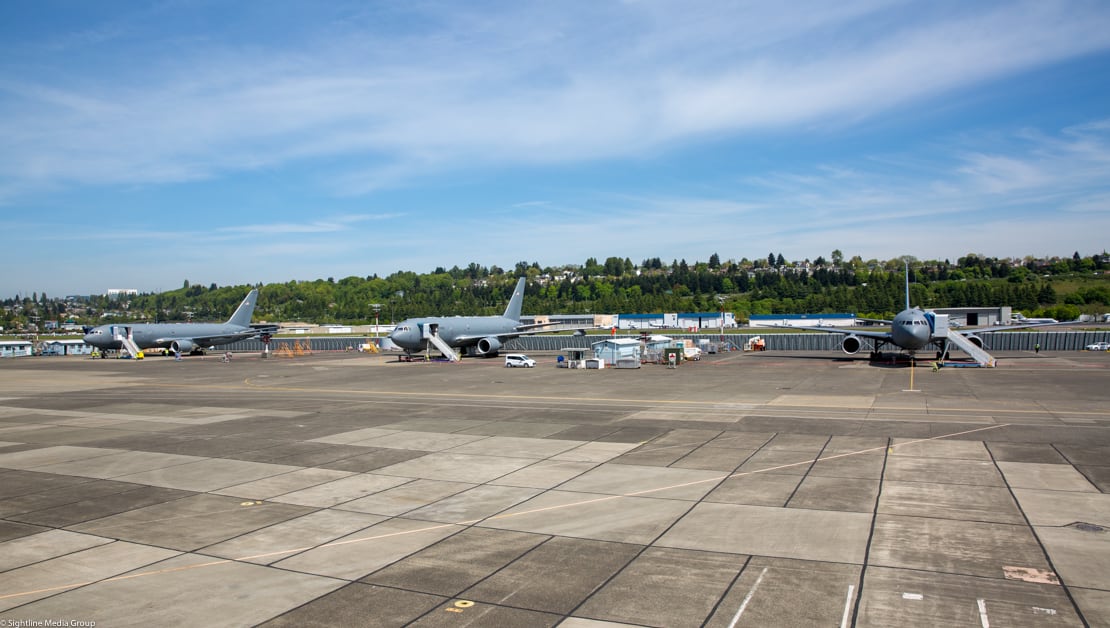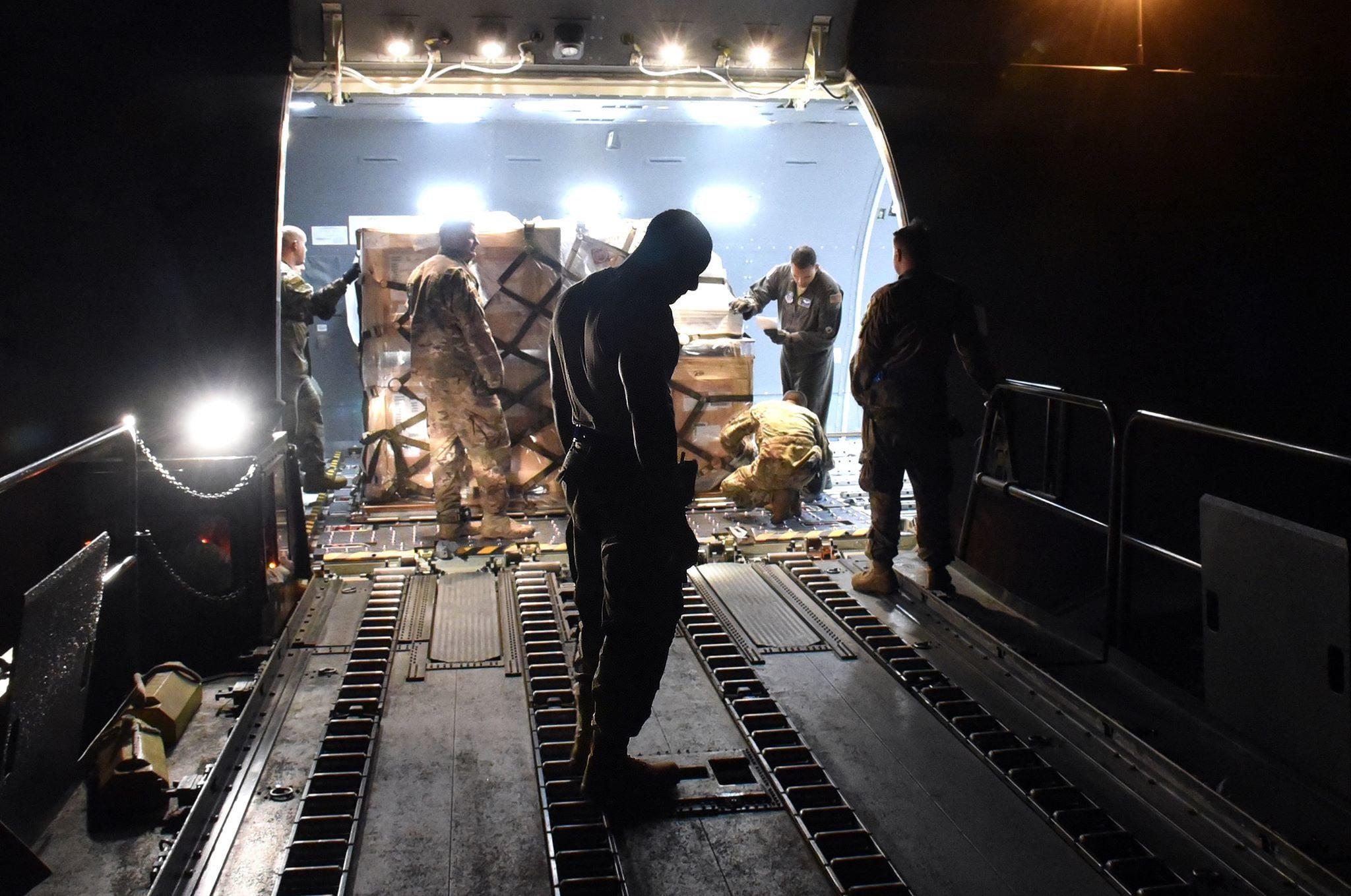NATIONAL HARBOR, Md. — It’s been eight months since the U.S. Air Force accepted the first KC-46 tanker from Boeing, but the head of Air Mobility Command says the company hasn’t made headway on the aircraft’s biggest technical problem.
“When we accepted the KC-46 with known CAT 1 deficiencies, we did so with the belief that it offered the fastest route to achieve limited operational capability and meet an urgent war-fighter requirement,” Gen. Maryanne Miller said during a Wednesday roundtable at the Air Force Association’s conference. Miller used a shortened version of the term category 1, which the service uses to describe serious technical issues that impact safety or could result in the loss of an aircraft or life.
“Eight months have passed since our first delivery, and Boeing has not made any progress [on the Remote Vision System]," she said.
Click here to read more from the Air Force Association’s 2019 conference.
The tanker’s Remote Vision System, a Rockwell Collins-designed camera suite that allows operators to steer the boom into a receiver aircraft without physically watching the process through a window, as is the case with the legacy KC-10 and KC-135.
Currently, the RVS presents imagery that is distorted in certain lighting conditions, posing difficulties for boom operators and leading to incidents of accidental scraping of the surface of receiver aircraft with the boom — leading to two category 1 deficiencies.
According to Miller, Boeing needs to make progress in improving the “acuity” of the system, which currently presents imagery comparable to what a person with 20/50 vision would see. The company also needs to improve what Miller termed “depth plane compression,” which is how the user internalizes the distance between the boom and the receiver aircraft based on that imagery.
RELATED

Boeing presented the Air Force with a “preliminary” redesign of the RVS that includes new hardware and software, Jamie Burgess, Boeing’s KC-46 program manager, told Defense News on Tuesday. The Air Force has not decided whether to accept it.
“The basics of the approach is to enhance the system so it provides more dynamic adjustment to contrast and varying environmental conditions,” he said. “It does more dynamic adjustment on its own, as opposed to the operator having to make adjustments. And then that's going to provide some enhancements as far as resolution.”
Burgess declined to say how much of system’s hardware must be replaced but did note that “key components” of the vision system would be changed.
“It's not just one thing, it's not just a camera or a display,” he said. “There are things throughout the system that will get adjusted. But we’re in the early phases of that.”
Miller said she has not personally been briefed on the redesign, but that she and Boeing officials have a discussion scheduled for Sept. 30. The newest category 1 deficiency, which Defense News first reported on Sept. 11, will also be a topic of conversation.
Last week, the Air Force put restrictions on the KC-46 that will keep it from being able to carry passengers and cargo for an indefinite period of time. The problem, which was discovered on a single tanker, was that multiple cargo restraint devices had became unlocked during a series of flights. Although the restraint devices did not completely open up and release the cargo, allowing it to roll freely throughout the cabin, AMC officials worried that such a scenario would pose considerable safety risks to personnel and potentially unbalance the plane during flight.
While the root cause is still under investigation, Boeing believes that the vibrations from flying or landing is creating friction between the rails of the cargo floor and the latch on the back of the lock, causing the latch to move to a position in which it is no longer fully engaged, Burgess said.
RELATED

“The concept for a fix is to put something in there that is a secondary latching like a spring or something like that that will hold it in place,” he told Defense News during an interview at the conference. “We’ve not finalized that, but it’s something that we’re working with the Air Force on, and the intent is to get some parts tested soon. We have some prototype parts that are being tested right now, and if the design works, then we would get it out there and get it on the airplanes. And we think that’s a relatively near-term thing.”
Boeing is also developing a fit for a tie-down cargo restraint to allow the Air Force to resume some test flights with cargo before the restraints are retrofitted with a secondary lock, he said. However, the concept is still in the design phase and the Air Force has not approved it.
Miller, who has not been briefed on either potential fix, said Boeing must quickly provide a solution that will bring the locks themselves up to specification.
Valerie Insinna is Defense News' air warfare reporter. She previously worked the Navy/congressional beats for Defense Daily, which followed almost three years as a staff writer for National Defense Magazine. Prior to that, she worked as an editorial assistant for the Tokyo Shimbun’s Washington bureau.








